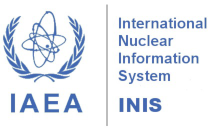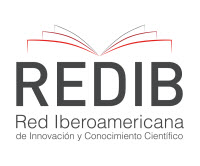Application of WDXRF and EDXRF Spectrometry for Chemical Characterization in Oil Sludge using the Fundamental Parameter Algorithm
DOI:
https://doi.org/10.15392/2319-0612.2024.2623Keywords:
Oil sludge, WDXRF, EDXRF, Fundamental Parameter AlgorithmAbstract
Oil sludge is a waste product generated by the oil industry, comprising organic substances (primarily long-chain polyaromatic, aromatic, and aliphatic hydrocarbons), inorganic compounds (such as sediments and metallic and non-metallic oxides), water, and oil processing residues. Radionuclides from the 238U and 232Th decay chains can be present in oil sludge, which justifies its classification as naturally occurring radioactive material (NORM). The oil industry produces approximately 60 million tons of oil sludge annually. Given the continuous generation of this waste, the development of additional storage sites will be necessary, incurring substantial costs. Furthermore, the storage and transportation of oil sludge pose significant environmental contamination risks. Due to its complex and heterogeneous composition, establishing a standardized methodology for classifying oil sludge presents considerable challenges. The development of an effective methodology for the analysis and classification of oil sludge is essential for proper waste management, as well as for facilitating the creation of treatment and reuse alternatives. X-ray fluorescence spectrometry (XRF) emerges as a promising analytical technique for classifying oil sludge, enabling direct, non-destructive analysis, thereby reducing both waste and analysis costs. In this study, wavelength dispersive X-ray fluorescence (WDXRF) and energy dispersive X-ray fluorescence (EDXRF) techniques were compared to assess their performance in analyzing the major (1–100%) and minor (0.01–0.99%) constituents in oil sludge samples. The elements were quantified using the Fundamental Parameters (FP) algorithm. The objective of this work is to develop a methodology for determining both major and minor elements in oil sludge, contributing to a more effective management of this waste.
Downloads
References
[1] SHIE, J. L. ; SHIE, J.-L.; LIN, J.-P.; CHANG, C.-Y.; WU, C.-H.; LEE, D.-J.; CHANG, C.-F.; CHEN, Y.-H. Oxidative Thermal Treatment of Oil Sludge at Low Heating Rates. Energy & Fuels, v. 18, n. 5, p. 1272–1281, 1 set. 2004. DOI: https://doi.org/10.1021/ef0301811
[2] LOPES, A. G.; DA SILVA, F. C. A.; LOPES, R. T. Radiological assessment of the disposal of bulk oil NORM waste: Case study from Brazil. Journal of Environmental Radioactivity, v. 261, 2023. DOI: https://doi.org/10.1016/j.jenvrad.2023.107139
[3] ABDULQAWI, M.; IBRAHIM, A.; EMBONG, R.; ISMAIL, N. Development of a hybrid technique of solvent extraction and freeze-thaw for oil recovery from petroleum sludge. Materials Today: Proceedings. 2023. DOI: https://doi.org/10.1016/j.matpr.2023.04.661
[4] DE ARAUJO, L.; PRADO, E.; MIRANDA, F. Physicochemical modifications of radioactive oil sludge by ozone treatment. Journal of Environmental Chemical Engineering, v. 8, 2020. DOI: https://doi.org/10.1016/j.jece.2020.104128
[5] LINHARES, V.; DE ARAUJO, L.; VICENTE, R. Enhanced removal of radium from radioactive oil sludge using microwave irradiation and non-ionic surfactant. Journal of Petroleum Science and Engineering, v. 211, 2022. DOI: https://doi.org/10.1016/j.petrol.2022.110168
[6] OJOVAN, M. Handbook of advanced radioactive waste conditioning Technologies. Cambridge, UK. Woodhead Publishing Limited. ISBN 978-1-84569-626-9. 2011. DOI: https://doi.org/10.1533/9780857090959.1
[7] PRADO, E.; MIRANDA, F.; PETRACONI, G. Use of plasma reactor to viabilise the volumetric reduction of radioactive wastes. Radiation Physics and Chemistry v. 168, 2020. DOI: https://doi.org/10.1016/j.radphyschem.2019.108625
[8] PRADO, E.; MIRANDA, F.; ARAUJO, L. Experimental study on treatment of simulated radioactive waste by thermal plasma: Temporal evaluation of stable Co and Cs. Annals of Nuclear Energy, v. 160, 2021. DOI: https://doi.org/10.1016/j.anucene.2021.108433
[9] PRADO, E.; MIRANDA, F.; RITA, C. Study of compactable solid Radioactive waste processing by termal plasma. Brazilian Applied Science Review, v. 8, p. 1795-1807, 2021. DOI: https://doi.org/10.34115/basrv5n4-005
[10] VICENTE, R.; TOLEDO, R.; REZENDE, R. Development of microwave technology for TENORM waste treatment – 17377. Waste management conference, p. 1-6, 2017.
[11] GUIMARÃES, A. K. V.; CHIAVONE-FILHO, O.; DO NASCIMENTO, C. A. O.; TEIXEIRA, A. C. S. C.; MELO, H. N. S. Study of oil sludge characteristics and oil extraction process. Eng. Sant. Ambient, v. 21, n.2, 2016. DOI: https://doi.org/10.1590/s1413-41522016139564
[12] BECKHOFF, B.; KANNGIEßER, B.; LANGHOFF, N.; WEDELL, R.; WOLFF, H. Handbook of Practical X-Ray Fluorescence Analysis. Springer Berlin, Heidelberg, 2006. DOI: https://doi.org/10.1007/978-3-540-36722-2
[13] SCAPIN, M. A. Application of X-ray diffraction and flourescence (WDXRF): testing of clay minerals. 2003. Dissertation (Master's Degree in Nuclear Technology - Materials) - Nuclear and Energy Research Institute, São Paulo, 2003.
[14] BORTOLETO, G. G. Development of Analytical Methods Using X-ray Spectrometry and Chemometrics, 2007. Thesis (PhD) - Institute of Chemistry, Department of Analytical Chemistry. State University of Campinas, São Paulo, 2007.
[15] LI, S.; SHEN, J.; BISHOP, T.F.A.; VISCARRA ROSSEL, R.A. Assessment of the Effect of Soil Sample Preparation, Water Content and Excitation Time on Proximal X-ray Fluorescence Sensing, Sensors, v. 22, 4572, 2022. DOI: https://doi.org/10.3390/s22124572
[16] ASTM – AMERICAN SOCIETY FOR TESTING MATERIALS. ASTM D 482 – 95. Standard Test Method for Ash from Petroleum Products. A. W. Drews, Manual on Hydrocarbon Analysis, ASTM International, West Conshohocken, PA. 1998.
[17] ROUSSEAU, R. M. How to Apply the Fundamental Parameters Method to the Quantitative X-ray Fluorescence Analysis of Geological Materials. Journal of Geosciences and Geomatics, v. 1, n. 1, pp. 1-7, 2013.
[18] GUILHEN, S. N.; Cotrim, M. E. B.; SAKATA, S. K; SCAPIN, M. A. Application of the fundamental parameter method to the assessment of major and trace elements in soil and sediments from Osamu Utsumi uranium mine by WDXRF. REM - International Engineering Journal, v. 72, n. 4, p. 609–617, out. 2019. DOI: https://doi.org/10.1590/0370-44672018720146
[19] INSTITUTO NACIONAL DE METROLOGIA, NORMALIZAÇÃO E QUALIDADE INDUSTRIAL – INMETRO. Orientação sobre Validação de Métodos Analíticos (DOQ-CGRE-008), Revisão 09, JUN/2020.
[20] ROUSSEAU, R. Detection limit and estimate of uncertainty of analytical XRF results. The Rigaku Journal, v. 18, n. 2, 2001.
[21] BROWN, R.J.C.; MILTON, M. J.T. Analytical techniques for trace element analysis: an overview, TrAC Trends in Analytical Chemistry, v. 24, Issue 3, p. 266-274, 2005. DOI: https://doi.org/10.1016/j.trac.2004.11.010
[22] KATSUTA, N. ; UMEMURA, A.; NAITO, S.; MASUKI, Y. ; ITAYAMA, Y.; NIWA, M.; SIRONO, S.; YOSHIDA, H.; KAWAKAMI, S. Heterogeneity effects in micro-beam XRF scanning spectroscopy of binary powdered mixtures and lake sediments, Spectrochimica Acta Part B: Atomic Spectroscopy, v. 210, 106817, 2023. DOI: https://doi.org/10.1016/j.sab.2023.106817
[23] MARGUI, E.; QUERALT, I.; DE ALMEIDA, E. X-ray fluorescence spectrometry for environmental analysis: Basic principles, instrumentation, applications and recent trends, Chemosphere, v. 303, 135006, 2022. DOI: https://doi.org/10.1016/j.chemosphere.2022.135006
[24] ZHOU, S.; WEINDORF, D. C.; CHENG, Q.; YANG, B.; YUAN, Z.; CHAKRABORTY, S. Elemental assessment of vegetation via portable X-ray fluorescence: Sample preparation and methodological considerations, Spectrochimica Acta Part B: Atomic Spectroscopy, v. 174, 105999, 2020. DOI: https://doi.org/10.1016/j.sab.2020.105999
[25] KAPIL, A.; KAILASH, RANI, R.; KUMAR, S.; MEHTA, D.; KUMAR, S. Study of chemical effects on L X-rays spectra of 59Pr compounds using high resolution WDXRF and EDXRF measurements, Applied Radiation and Isotopes, v. 205, 111185, 2024. DOI: https://doi.org/10.1016/j.apradiso.2024.111185
[26] XHIXHA, G.; BALDONCINI, M.; CALLEGARI, I.; COLONNA, T.; HASANI, F.; MANTOVANI, F.; SHALA, F.; STRATI, V.; KAÇELI, M. X. A century of oil and gas exploration in Albania: Assessment of Naturally Occurring Radioactive Materials (NORMs), Chemosphere, v. 139, p. 30-39, 2015. DOI: https://doi.org/10.1016/j.chemosphere.2015.05.018
[27] INTERNATIONAL ATOMIC ENERGY AGENCY. Radiation Protection and the management of Radioactive waste in the oil and gas industry. Austria, Vienna: IAEA, 2003.
[28] RAVISANKAR, R.; HARIKRISHNAN, N.; CHANDRASEKARAN, A.; SURESH, M.; GANDHI, R. A. Data on heavy metal and magnetic relationships in coastal sediments from Southeast Coast of Tamilnadu, India. Data in Brief, v. 16, p. 392-400, 2018. DOI: https://doi.org/10.1016/j.dib.2017.11.056
[29] QUINTUS, S.; DYE, T.; MILLS, P.; LUNDBLAD, S.; BALAI, C.; TIMOTHY, M. R.; FILIMOEHALA, D.; FILIMOEHALA, C. W.; MORRISON, A. E.; TULCHIN, J.; DUARTE, T.; MCCOY, M. D.; JIANG, P. The patterning of volcanic glass transfer across eastern Oʻahu Island, Hawaiʻi. Journal of Archaeological Science, v. 52, 2023. DOI: https://doi.org/10.1016/j.jasrep.2023.104282
Downloads
Published
Issue
Section
Categories
License
Copyright (c) 2024 Aline Leone Muguet Pinto, Marcos Antonio Scapin, Alexandre Luiz de Souza, Cláudia Monteiro Paixão, Marycel Elena Barboza Cotrim, Sabine Neusatz Guilhen

This work is licensed under a Creative Commons Attribution 4.0 International License.
Licensing: The BJRS articles are licensed under a Creative Commons Attribution 4.0 International License, which permits use, sharing, adaptation, distribution and reproduction in any medium or format, as long as you give appropriate credit to the original author(s) and the source, provide a link to the Creative Commons license, and indicate if changes were made. The images or other third party material in this article are included in the article’s Creative Commons license, unless indicated otherwise in a credit line to the material. If material is not included in the article’s Creative Commons license and your intended use is not permitted by statutory regulation or exceeds the permitted use, you will need to obtain permission directly from the copyright holder. To view a copy of this license, visit http://creativecommons.org/licenses/by/4.0/






















